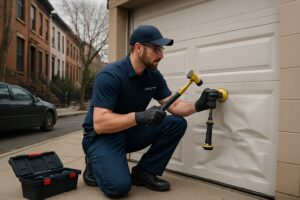Modern aircraft, especially military and multi-role platforms, are designed to carry a variety of external equipment—fuel tanks, weapon pods, radars, and other mission-critical stores. Before any of these items can be flown on an aircraft, Store Load Testing is required to validate that the airframe can handle the loads transmitted through pylons and mounting systems. These loads, which result from aerodynamic drag, G-forces during maneuvers, and vibration, must be fully understood before the aircraft is cleared for operational use.
Store Load Testing plays a crucial role during the aircraft design phase. Engineers model how different payloads affect the structural integrity of the wings, fuselage, and mounting points. Using test rigs and load simulators, they apply expected forces and assess whether the aircraft’s components meet strength and fatigue requirements. This process ensures the airframe won’t suffer from unexpected stress or premature fatigue during actual missions, enhancing both safety and performance.
Captive Load Testing: Proving Airworthiness in Flight
While Store Load Testing provides essential structural insights in a controlled environment, Captive Load Testing takes the evaluation to the skies. In this test, the external store is mounted to the aircraft and flown without being released, allowing engineers to collect real-time data on how it behaves under actual flight conditions. This testing is necessary to validate that the store does not negatively impact aircraft aerodynamics, stability, or structural loads during flight.
Captive Load Testing is often conducted during airworthiness certification, especially when new stores are added to an existing platform. Aircraft designers must prove to aviation authorities (such as the FAA or military equivalents) that stores will remain securely attached, won’t induce harmful vibrations or flutter, and won’t compromise the aircraft’s handling characteristics. The data collected supports compliance with certification standards and often leads to fine-tuning of design parameters or flight limits.
Why These Tests Are Essential for Aircraft Certification
In both civilian and military aviation, structural testing is a non-negotiable requirement before an aircraft can be declared airworthy. Store Load Testing and Captive Load Testing serve complementary functions in this certification journey:
-
Store Load Testing helps validate finite element analysis (FEA) and computer-aided design (CAD) assumptions during structural engineering phases.
-
Captive Load Testing helps validate real-world conditions and dynamic behaviors that can’t be fully predicted by models alone.
By combining the results of both, manufacturers can demonstrate full compliance with performance and safety regulations. These tests also ensure that aircraft can safely operate with a range of external configurations without requiring separate design cycles for each store.
Aircraft Design Considerations Driven by Load Testing
The outcomes of load testing heavily influence how an aircraft is designed, particularly in these areas:
1. Wing and Pylon Design
The pylons that hold external stores must be robust yet lightweight. Load testing determines their size, shape, and material composition to ensure strength without excess weight.
2. Mounting Interfaces
The hardware connecting stores to the aircraft must handle repeated loading and unloading. Testing reveals whether quick-release mechanisms, bolts, or brackets can survive operational stress.
3. Flight Control Systems
Certain stores may affect an aircraft’s center of gravity or drag profile. Data from captive tests informs changes to flight control laws and autopilot systems to compensate for these effects.
4. Structural Reinforcements
In some cases, load testing reveals that parts of the aircraft need reinforcement to handle specific stores, especially in multi-role aircraft that carry varied payloads.
Real-World Applications of Load Testing in Design
Aircraft programs across the globe apply these testing methods during design and upgrade cycles. For example:
-
Multirole fighters like the F-16 or JAS 39 Gripen use load testing to safely integrate a wide array of stores without redesigning the entire aircraft.
-
Trainer aircraft being upgraded for light attack roles undergo both tests to assess whether their airframes can support heavier weapons.
-
Transport aircraft modified to carry underwing pods or surveillance systems use load testing to verify structural impact and airflow interactions.
In each case, Store and Captive Load Testing provide engineers the data they need to design for flexibility without compromising safety.
How Testing Impacts Airworthiness Certification
Regulatory agencies demand hard evidence of structural and aerodynamic compatibility for any store-aircraft combination. The data generated by Store Load Testing and Captive Load Testing feeds directly into:
-
Certification Reports
-
Flight Manual Updates
-
Maintenance Schedules
-
Fatigue Life Predictions
Without these tests, aircraft simply cannot be certified to fly with mission-specific payloads. Additionally, insurance, military contract approvals, and export licenses often hinge on proper certification, making these tests a commercial necessity as well.
Technological Tools Supporting Load Testing
Modern testing is supported by a variety of tools and technologies:
-
Strain Gauges & Load Cells: Measure how materials deform under pressure.
-
Telemetry Systems: Collect real-time flight data during captive tests.
-
Finite Element Analysis (FEA): Simulates load conditions before physical testing.
-
High-Speed Cameras & Vibration Sensors: Detect minute changes during test flights.
These tools enable precise data collection and faster design iterations, reducing time-to-market for new aircraft configurations.
The Future of Load Testing in Aerospace Design
As aircraft become more modular and multirole, the importance of flexible, rapid load testing grows. Future trends include:
-
Digital Twins for Load Simulation: Allowing virtual store testing before physical models exist.
-
Adaptive Flight Control Systems: Automatically adjusting based on real-time store load data.
-
AI-Based Data Analysis: Helping engineers interpret large test datasets more effectively.
With these advancements, aircraft design teams can integrate new stores more quickly while still ensuring top-tier safety and performance.




